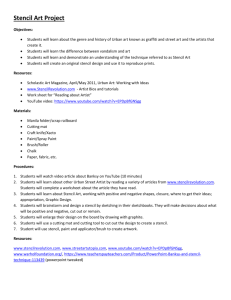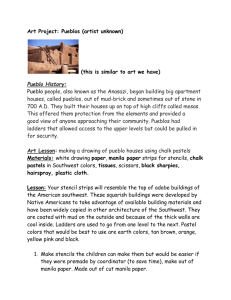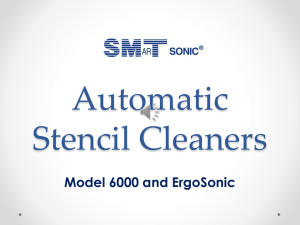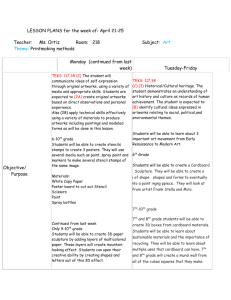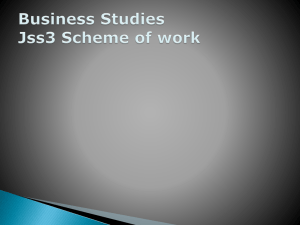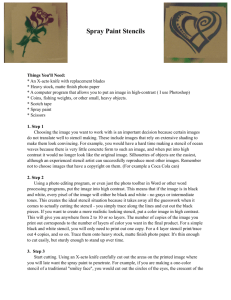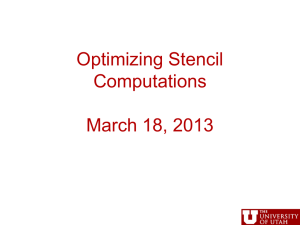Spray and Fuse
advertisement
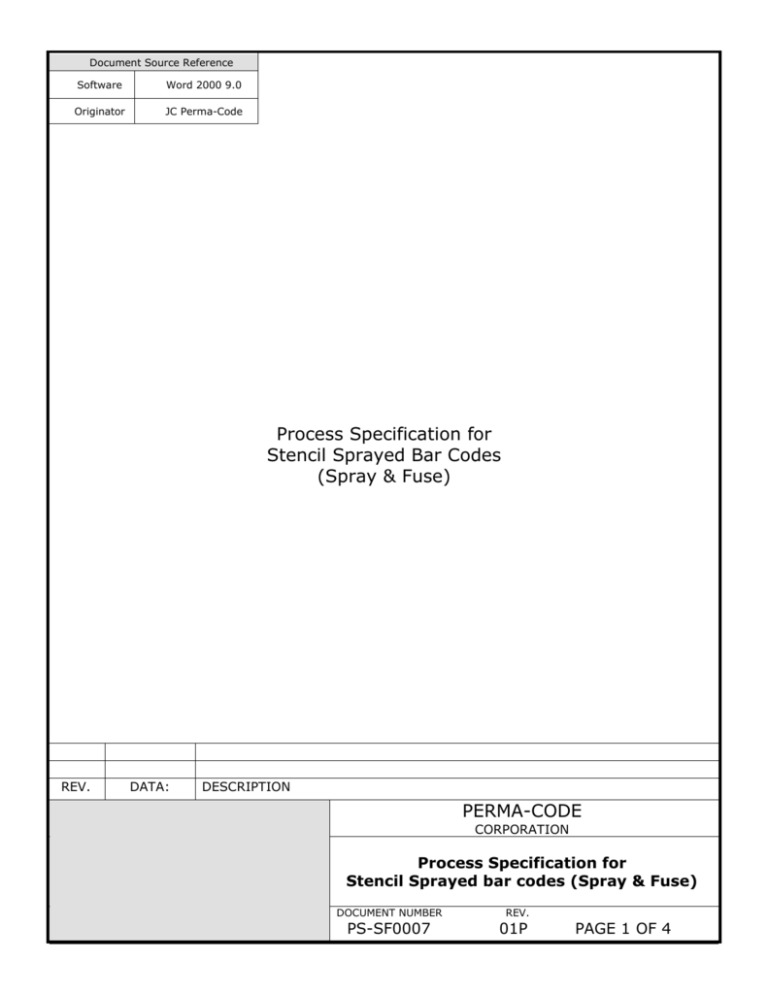
Document Source Reference Software Word 2000 9.0 Originator JC Perma-Code Process Specification for Stencil Sprayed Bar Codes (Spray & Fuse) REV. DATA: DESCRIPTION PERMA-CODE CORPORATION Process Specification for Stencil Sprayed bar codes (Spray & Fuse) DOCUMENT NUMBER PS-SF0007 REV. 01P PAGE 1 OF 4 1. PURPOSE 1.1 Outline methods and procedures to spray a barcode using a combustion gun to spray metal powders that are later fused to the substrate. Bar Codes are also known as a machine-readable data symbols. 2. SCOPE 2.1 This specification defines the preparation and procedure for the use of a stencil to thermal spray the data symbol on an existing part and covers fusion temperatures and fusion environments. 3. EQUIPMENT 3.1 Pre-encoded adhesive backed Teflon bar code/data symbol stencil. 3.2 Combustion gun with tanks and metal powder. 3.3 Grit Blaster with 40-60 mesh Garnet or Aluminum Oxide. 3.4 Barcode reader. 3.5 1-2” Wood or rubber roller. 3.6 A vacuum or gas purged oven capable of 1800 degrees F. 4. PREPARATION 4.1 Designate the area for the adhesive backed Teflon stencil to be applied. 4.2 Area must be clean, dry, and free of oils PERMA-CODE CORPORATION DOCUMENT NUMBER PS-SF0007 REV. 01P PAGE 2 OF 4 5. PROCEDURE 5.1 Substrate Preparation 5.1.1 Solvent wipe the area to be marked with MEK. 5.1.2 Mask any adjacent areas that need protection during grit blast. 5.1.3 Grit blast the area to be marked at 90 PSI with 40-60 mesh garnet or aluminum oxide until the substrate is completely clean of all scale. 5.2 Stencil Attachment onto the Substrate 5.2.1 Clean the area to be marked with Dry air at 90 PSI at a 1” distance to remove blasting dust. 5.2.2 Remove the adhesive protection liner from the back of the Stencil. 5.2.3 Apply the pre-encoded stencil to the grit blasted area of the substrate. 5.2.4 Roll the stencil down to the substrate using a Roller to insure there are no air bubbles under the stencil. 5.3 Thermal Spray Equipment Setup 5.3.1 Set the gas & powder feed to the following settings. O2 at 20 PSI, Acetylene at 10 PSI, Powder at Max. 5.3.2 Set the spray distance to 12 inches. 5.3.3 Set the feed rate to 1200 inches per minute. PERMA-CODE CORPORATION DOCUMENT NUMBER PS-SF0007 REV. 01P PAGE 3 OF 4 5.4 Thermal Spray Operation 5.4.1 Ignite equipment and adjust settings. 5.4.2 Pre-heat area to be marked to 200 degrees F. 5.4.3 Apply material to the substrate through the stencil using the above parameters until the desired thickness is achieved. Approximate deposition is less than .001 inch per pass. Allow 15-30 seconds between passes. 5.4.4 Do not remove the stencil if the part is over 250 degrees F. 5.4.5 Contrasting treatment can be applied prior to or after removing the stencil. See required process specification for treatment. 5.5 Fusion Operation 5.5.1 The data symbol can be torch fused with the same settings as before but use a 4-inch distance. The substrate must reach a minimum of 1750 Degrees F. 5.5.2 Data symbols can also be fused using a vacuum furnace or a oven capable of nitrogen gas purge. Again, 1750 degrees F. minimum is required. 6. RESULTS 6.1.1 A properly installed, adhesive backed Teflon data stencil that will yield a machine-readable Point of cast bar code on the finished part. 7. PASS/FAIL CRITERIA 7.1 A machine readable bar code with no back cast. PERMA-CODE CORPORATION DOCUMENT NUMBER PS-SF0007 REV. 01P PAGE 4 OF 4
